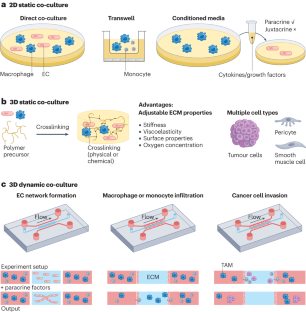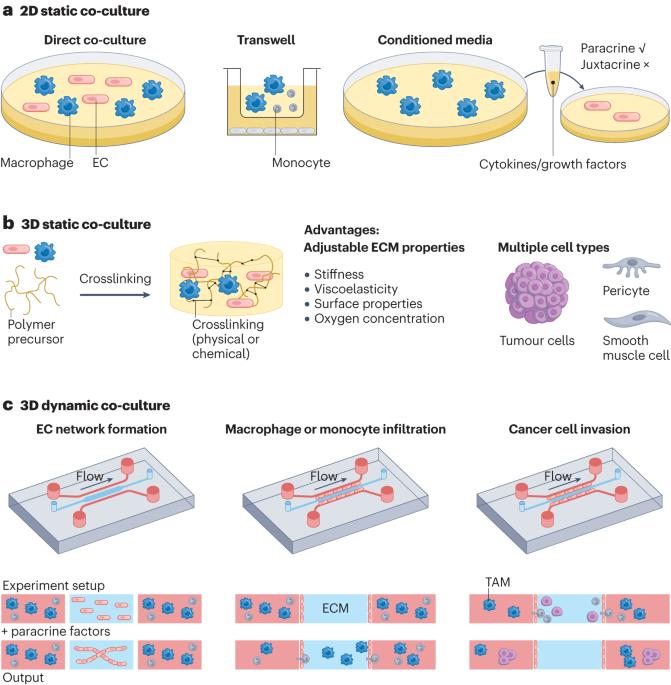工程生物材料定制巨噬细胞-内皮相互作用的微环境
IF 79.8
1区 材料科学
Q1 MATERIALS SCIENCE, MULTIDISCIPLINARY
引用次数: 0
摘要
巨噬细胞和内皮细胞(ECs)通过调节炎症、血管形成和组织重塑,在生理和病理状态下发挥着至关重要的作用。过去几十年来,人们对巨噬细胞和内皮细胞在组织稳态和疾病进展中的相互作用进行了广泛研究,但对细胞外基质在这一细胞间过程中的作用却知之甚少。在此,我们回顾了目前关于微环境线索(生物物理和生物化学)如何在不同疾病的病理过程中决定巨噬细胞-内皮细胞串扰的知识。我们总结了利用生物材料作为细胞外基质的研究,这些材料具有操纵巨噬细胞-内皮细胞命运以调节先天性和适应性免疫、血管生成和再生的可靠特性。最后,我们讨论了开发新型治疗策略的潜力和挑战,以调整巨噬细胞-EC 龛来恢复各种疾病的稳态。巨噬细胞和内皮细胞之间的相互作用受细胞外基质中微环境线索的调控。本透视重点介绍了利用生物材料作为细胞外基质模拟巨噬细胞-内皮细胞龛位以及在组织稳态和疾病进展中调节细胞命运的最新进展。本文章由计算机程序翻译,如有差异,请以英文原文为准。


Engineering biomaterials to tailor the microenvironment for macrophage–endothelium interactions
Macrophages and endothelial cells (ECs) have essential roles in physiological and pathological conditions by regulating inflammation, vascularization and tissue remodelling. Although the interactions between macrophages and ECs in tissue homeostasis and disease progression have been extensively studied in the past few decades, the role of the extracellular matrix in this intercellular process is less known. Here, we review the current knowledge on how microenvironmental cues, biophysical and biochemical, dictate macrophage–endothelium crosstalk in the pathology of different diseases. We summarize studies using biomaterials as extracellular matrix with tenable properties to manipulate macrophage–EC fate to regulate innate and adaptive immunity, angiogenesis and regeneration. Finally, we discuss the potential and challenges of developing novel therapeutic strategies to tailor macrophage–EC niches to restore homeostasis in various diseases. The interactions between macrophages and endothelial cells are regulated by microenvironmental cues in the extracellular matrix. This Perspective highlights recent advances in using biomaterials as extracellular matrix to mimic macrophage–endothelium niches and to regulate cell fate in tissue homeostasis and disease progression.
求助全文
通过发布文献求助,成功后即可免费获取论文全文。
去求助
来源期刊

Nature Reviews Materials
Materials Science-Biomaterials
CiteScore
119.40
自引率
0.40%
发文量
107
期刊介绍:
Nature Reviews Materials is an online-only journal that is published weekly. It covers a wide range of scientific disciplines within materials science. The journal includes Reviews, Perspectives, and Comments.
Nature Reviews Materials focuses on various aspects of materials science, including the making, measuring, modelling, and manufacturing of materials. It examines the entire process of materials science, from laboratory discovery to the development of functional devices.
 求助内容:
求助内容: 应助结果提醒方式:
应助结果提醒方式:


